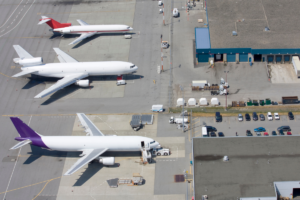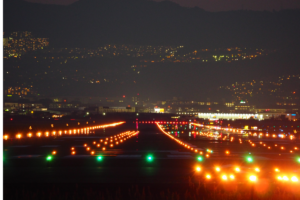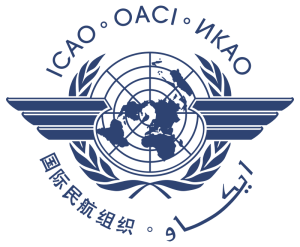当莱特兄弟于 1903 年成功展翅高飞时,他们只专注于让他们的 "飞行器 "离开地面并尽可能长时间地保持飞行。他们当时不可能意识到,他们刚刚带来的技术革命不仅仅是航空本身,还有围绕机场安全运营的创新,尤其是在着陆时。
机场安全的一个关键部分是跑道照明系统,它通常向飞行员指示跑道边缘、门槛、中心线和着陆区。有了这一照明系统,停机坪上飞机起飞、着陆和移动时发生事故的几率就会降到最低,尤其是在夜间和能见度较低的其他时间。
随着航空业在上个世纪的发展,空中的商用飞机比以往任何时候都多,因此也需要更多基于技术的跑道照明解决方案。好消息是,自 20 世纪 30 年代首次安装进场照明系统以来,跑道照明技术已经有了长足的发展。
让我们来看看目前正在使用的一些最能改变游戏规则的机场照明技术。
LED 技术
如果你是照明专家,你就会发现,最近没有任何一项创新能像发光二极管(LED)技术一样改变他们的行业。几十年来,机场一直依赖卤素灯泡来照亮跑道,直到 LED 的出现才彻底解决了这一问题。
LED 革命并不只是为了改变而改变,LED 确实为机场带来了其他灯具无法提供的实实在在的好处。例如,与白炽灯或卤素灯泡相比,LED 消耗的能源最多可减少 75%,这就为机场运营商节省了大量能源,尤其是因为许多跑道照明系统是全天候运行的。
此外,LED 的使用寿命超过 50,000 小时,在某些情况下甚至长达 100,000 小时,而卤素灯的使用寿命仅为 2,000 小时,这就减少了更换灯泡的频率,从而为机场节约了成本。此外,LED 比卤素灯更耐用,不易因剧烈振动、恶劣天气或物理冲击而损坏,这些都是跑道上常见的问题。
也许最重要的是,LED 能提高飞机的安全性。凭借出色的光输出和色彩准确性,跑道和滑行道标记和标志即使在黑暗、雾、雨和雪中也清晰可见。
自适应照明系统
早在我们的行业刚刚起步的时候,跑道照明只是一个简单的开灯问题。几十年来,这种方法一直行之有效,但随着飞机工业的飞速发展,对更复杂系统的需求也与日俱增,在影响跑道能见度的恶劣条件下,昼夜不停地产生更多的空中交通。
对更动态照明控制的需求催生了自适应照明。这些先进的系统利用传感器收集雾、雨或雪等外部天气条件的数据,并自动提高照明亮度,以优化飞行员的能见度。反之,当天气晴朗时,它们也会变暗,从而减少能源消耗。更好的照明控制还能减少光污染,从而提高附近社区的生活质量,并将机场照明对当地生态系统的影响降至最低。
将机场照明系统与自动地表探测设备(ASDE)相结合,是自适应照明如何优化机场运营的另一个例子。ASDE 监控跑道和滑行道上飞机和地面车辆的存在,并根据地面交通状况自动调整照明。激活特定灯光以引导飞机驾驶员沿着跑道安全飞行的能力增强了态势感知能力,降低了跑道入侵的风险。
自适应照明系统还可用于向空中交通管制员提供数据,然后管制员可根据飞机进场或地面移动时的情况需要,手动调整机场照明。
无线机场照明控制和监测
随着无线设备在我们的日常生活中越来越普遍,机场开始采用无线技术帮助管理跑道照明系统也只是时间问题。
开关的好处有很多。例如,无线系统不需要复杂的地下布线网络,使安装和维护更加容易。此外,该技术还能为机场技术人员提供时间监控、诊断和故障警报,他们无需亲自检查每个灯具,就能对问题做出快速反应,从而缩短了维修时间。
机场照明技术不断发展,似乎很难跟上。如果您想了解最新的机场照明技术、 与 Airport Lighting Company 专家交流.我们经验丰富的合格技术人员可提供实用、经济的机场照明和电力设备解决方案,确保您的跑道和滑行道照明运行平稳、高效、安全。
请致电 Airport Lighting Company,了解最新的机场照明技术
Airport Lighting Company 团队是 随时准备回答您的问题 了解我们的技术产品如何帮助您提高跑道的安全性、可靠性和效率。请致电 315-682-6460,我们将为您提供快速、友好的服务。






